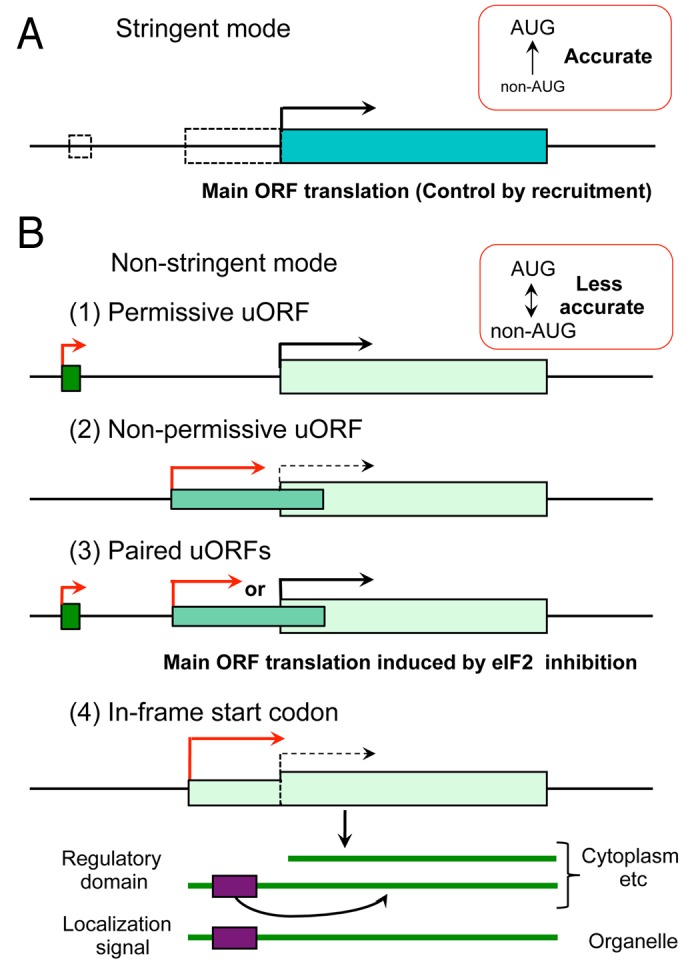
Figure 4. Possible mechanisms of translational control by regulated initiation stringency. Typical coding structures of mRNA (horizontal lines) are depicted with the main ORF starting with the canonical AUG codon (longer box to the right). Black and red arrows indicate AUG- and non-AUG-initiated translation, respectively. mRNA translation patterns in the normal stringent mode (A) and the hypothetical non-stringent mode (B) are depicted. In (A), dotted boxes depict non-AUG-initiated uORFs that are not translated due to the normal, stringent mode of initiation. The main ORF is translated predominantly. In (B), panels 1–4 describe four patterns of regulation achieved by non-AUG-initiation. In panel 1, non-AUG-initiated uORF is permissive to downstream re-initiation, allowing the main ORF translation. In panel 2, non-AUG-initiated uORF is non-permissive to downstream re-initiation. The translation of the main ORF is only possible by the ribosome that had leaky-scanned the uORF (dotted line). In panel 3, the upstream permissive uORF allows downstream re-initiation of the second non-permissive uORF “or” the main ORF. When eIF2 TC abundance and recruitment are normal, the second uORF is re-initiated, inhibiting the main ORF translation. When eIF2 TC is limited or its ribosome binding is inhibited, the re-initiation is delayed and occurs at the main ORF. In panel 4, thick lines below mRNA schematics denote proteins encoding by the mRNA, with boxes indicating N-terminal functional segments added by the in-frame non-AUG initiation. Though not depicted here, there are myriads of mRNAs with AUG-initiated uORFs that are translated in the stringent mode, playing important roles in translational control. See text for details.
